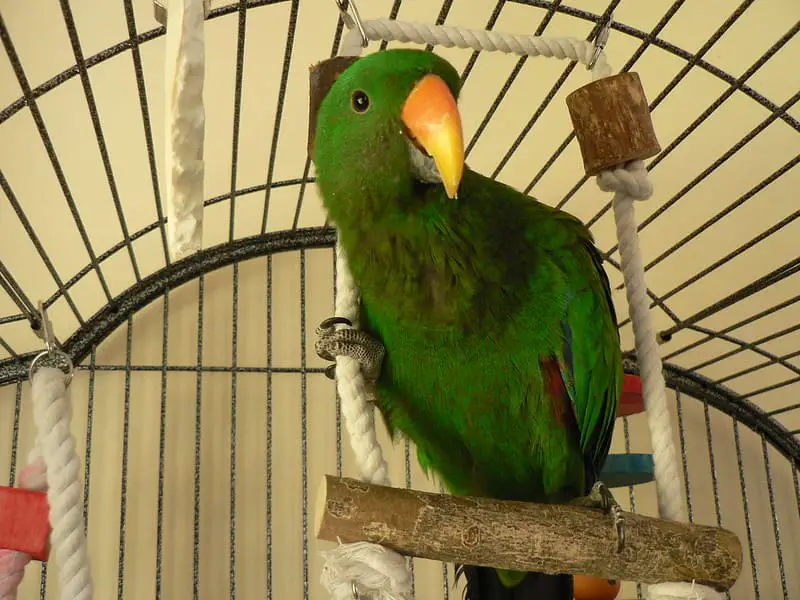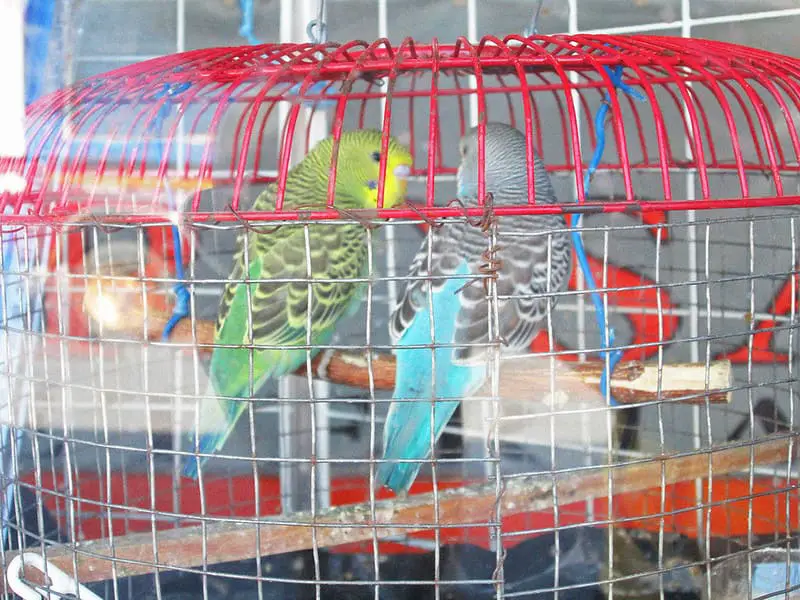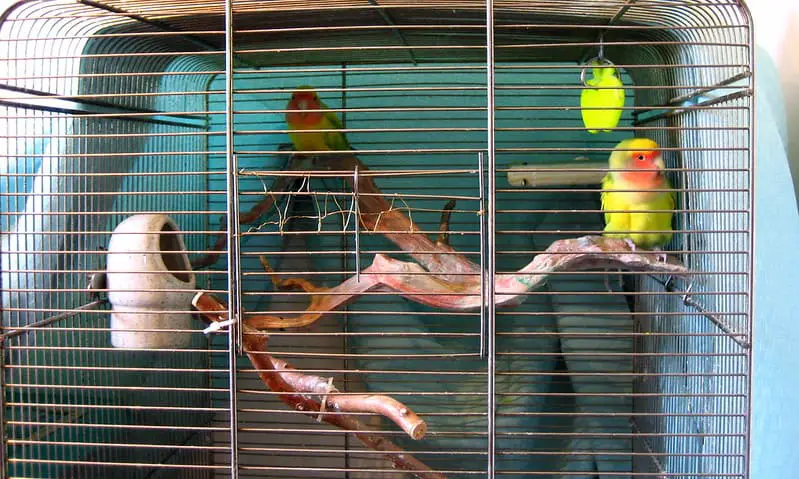Birds, with their captivating songs and vibrant plumage, have long been cherished as pets. Proper care and attention to their well-being are essential to ensure their health and happiness. One common practice that has generated discussion among bird owners is whether or not to cover a bird cage at night. In this comprehensive article, we will explore the reasons for covering a bird cage at night, the potential benefits and drawbacks, and the factors to consider when deciding what’s best for your feathered companion.

The Nocturnal Nature of Birds
Understanding the natural behavior and needs of birds is crucial when considering whether to cover their cage at night. Most bird species are diurnal, which means they are active during the day and rest at night. However, their sleep patterns can vary depending on the species.
While birds are generally diurnal, they don’t experience sleep in the same way humans do. Instead, they have a unique sleep pattern, known as unihemispheric slow-wave sleep. This means that only one hemisphere of their brain sleeps at a time, allowing the other half to remain alert to potential threats. This adaptation is essential for survival in the wild, where they are vulnerable to predators.
Reasons to Cover a Bird Cage at Night
Covering a bird cage at night is a practice that many bird owners follow for several reasons. Let’s explore some of the most common reasons why people choose to cover their birds’ cages at night:
1. Mimicking Natural Sleep Patterns
By covering the cage at night, some bird owners aim to mimic the natural sleeping conditions of their bird’s wild counterparts. In the wild, birds sleep in sheltered, concealed areas, providing them with a sense of safety and security. Covering the cage can create a similar feeling for pet birds.
2. Reducing Stress and Anxiety
Covering the cage can help reduce stress and anxiety in some birds. It provides a dark and quiet environment, minimizing visual and auditory stimuli that might otherwise disrupt their sleep. This can be especially beneficial for nervous or easily startled birds.
3. Regulating Light Exposure
Exposure to light at night can disrupt a bird’s sleep cycle. Covering the cage helps regulate the amount of light that reaches the bird and prevents it from being disturbed by artificial lighting or other sources of illumination in the room.
4. Maintaining a Consistent Schedule
Covering the cage at night helps establish a consistent schedule for the bird. Birds thrive on routine, and providing them with a clear distinction between daytime and nighttime can contribute to their well-being.
5. Preventing Night Frights
Some birds are prone to night frights, sudden panics or thrashing in their cage during the night. Covering the cage can help prevent these episodes by reducing the visibility of perceived threats.
6. Reducing Chilling
In some regions, nighttime temperatures can drop significantly. Covering the cage can help retain warmth within the enclosure and prevent the bird from getting too cold during the night.

Potential Drawbacks of Covering a Bird Cage
While covering a bird cage at night can have its advantages, it’s essential to consider the potential drawbacks and limitations of this practice:
1. Loss of Social Interaction
Covering the cage can limit social interaction between the bird and its human companions. Birds are social animals, and they benefit from time spent with their owners. Covering the cage too early in the evening can curtail this important interaction.
2. Reduced Mental Stimulation
Birds are intelligent creatures that require mental stimulation. Covering the cage may limit their exposure to interesting sights and sounds, which are essential for their mental well-being.
3. Isolation
Some birds may feel isolated or stressed when the cage is covered. It may create a feeling of confinement, which can lead to anxiety or unhappiness.
4. Disruption of Natural Sleep Patterns
Covering the cage is not necessary for all bird species, and it can disrupt the sleep patterns of birds that are more active during the evening or night. Some species of parrots, for instance, are known for their nighttime vocalizations and activity.
5. Overheating
In warm climates, covering the cage can lead to overheating, especially if the material used for the cover does not allow proper ventilation. Birds can be sensitive to temperature changes, and overheating can be harmful.
6. Limited Awareness of Surroundings
Covering the cage may make the bird less aware of its surroundings, potentially causing stress or disorientation when the cover is removed.
Factors to Consider When Deciding to Cover a Bird Cage
The decision to cover a bird cage at night should be made with careful consideration of several factors. Here are key considerations to keep in mind when deciding whether to cover your bird’s cage:
1. Bird Species
Different bird species have varying sleep patterns and requirements. For example, budgerigars (parakeets) are typically diurnal, while some parrot species like cockatiels or conures may have more flexible sleep patterns. Consider the natural behavior of your specific bird species when deciding on cage covering.
2. Individual Bird Behavior
The behavior and preferences of your individual bird should also influence your decision. Some birds may feel more secure and relaxed with a covered cage, while others may become stressed or anxious. Pay attention to how your bird responds to cage covering and adjust accordingly.
3. Environmental Factors
Consider the climate and temperature in your location. In cold climates, covering the cage can help maintain warmth, while in hot climates, it may lead to overheating. Ensure that the cage covering material allows for proper ventilation.
4. Light Exposure
Excessive exposure to artificial light at night can disrupt a bird’s sleep cycle. If your bird’s cage is located in an area with artificial lighting or streetlights, covering the cage may help reduce the impact of light pollution.
5. Night Frights
If your bird is prone to night frights or sudden panics during the night, covering the cage can provide a sense of security and help prevent these episodes.
6. Routine and Social Interaction
Consider the bird’s daily routine and the amount of social interaction it receives. Ensure that the bird has sufficient interaction and mental stimulation during the day before covering the cage at night.
7. Gradual Transition
If you are transitioning your bird to a new cage covering routine, do so gradually. Start by partially covering the cage and then progress to complete coverage. Observe how the bird adjusts and make changes accordingly.
8. Monitor Your Bird’s Health
Regularly monitor your bird’s health and well-being. Changes in behavior, appetite, or physical condition can indicate stress or discomfort related to cage covering.
9. Consult with a Vet
If you have concerns about your bird’s sleep patterns or the impact of cage covering on its health and well-being, consult with an avian veterinarian. They can provide guidance tailored to your specific bird’s needs.

Alternatives to Cage Covering
If you decide that cage covering is not the best option for your bird, consider alternative practices to ensure your feathered friend’s comfort and well-being:
1. Dim the Lights
Instead of completely covering the cage, you can dim the lights in the room where your bird’s cage is located. This can help create a calming environment without isolating the bird.
2. Provide a Sleep Cage
Some bird owners opt for a second, smaller “sleep cage” in a quiet and dark room. Birds are placed in the sleep cage at night, providing them with a peaceful sleeping environment while maintaining their social interaction and mental stimulation during the day.
3. Maintain a Consistent Routine
Establish a consistent daily routine for your bird. Birds thrive on predictability, so providing them with regular feeding, playtime, and bedtime schedules can help create a sense of security and stability.
4. Limit Artificial Light
To prevent the disruption of your bird’s sleep cycle, minimize the use of artificial lighting in the room where the cage is located, especially during the evening and night.
5. Provide Enrichment
Enrich your bird’s environment with toys, foraging activities, and social interaction during the day. Mental stimulation can help keep your bird engaged and content.
Conclusion
The decision to cover a bird cage at night is a matter of individual preference and consideration of your bird’s specific needs and behavior. While some birds benefit from a covered cage as it mimics their natural sleeping conditions and provides a sense of security, others may find it stressful or isolating.
It’s essential to observe your bird’s responses and tailor your approach accordingly. Consider the bird’s species, individual behavior, environmental factors, and the need for social interaction and mental stimulation. Alternatives to full cage covering, such as dimming the lights or providing a sleep cage, can be effective in creating a suitable sleeping environment for your feathered companion.
Above all, prioritize the well-being and happiness of your bird. Regular veterinary check-ups, a balanced diet, and a stimulating environment are essential for your bird’s overall health, and these considerations should guide your decisions regarding cage covering.